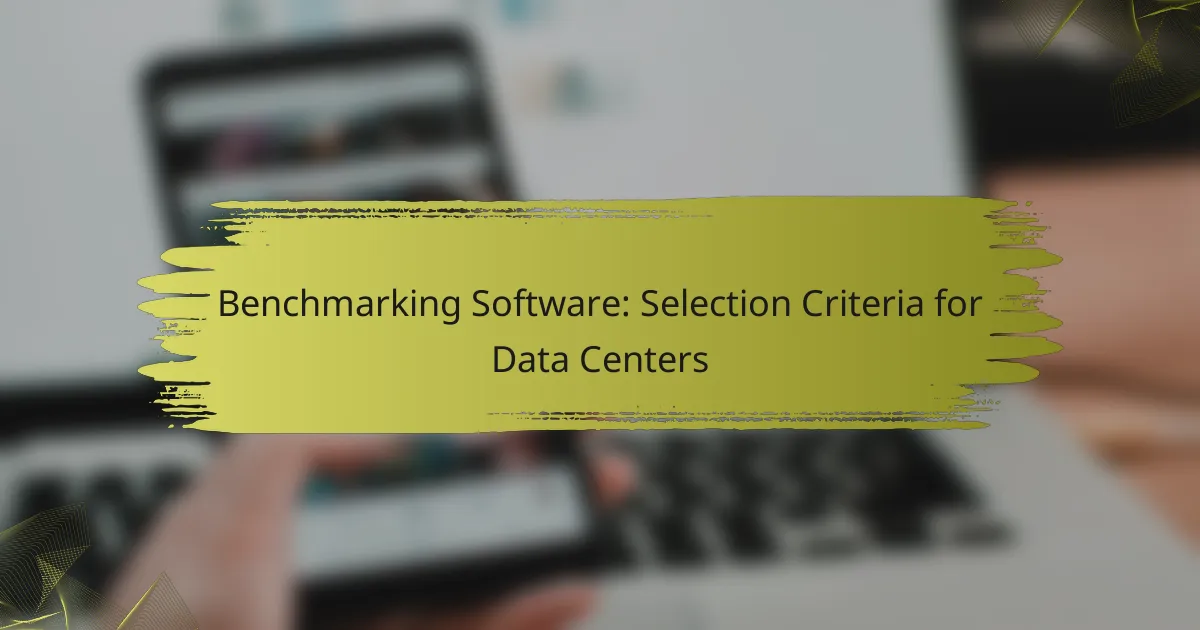Benchmarking tools play a crucial role in optimizing mixed-use environments by offering valuable insights into property analytics and performance metrics. Tools like CoStar, Argus, and Yardi empower stakeholders to make informed decisions, assess performance, and identify areas for improvement across diverse spaces. Careful selection based on integration capabilities and user experience ensures these tools effectively support resource allocation and enhance overall development outcomes.

What are the best benchmarking tools for mixed-use environments?
The best benchmarking tools for mixed-use environments include CoStar, Argus, Benchmarking Analytics, and Yardi. These tools provide insights into property analytics, financial modeling, performance metrics, and property management, helping stakeholders make informed decisions.
CoStar for property analytics
CoStar is a leading platform for property analytics, offering comprehensive data on commercial real estate. It allows users to analyze market trends, property values, and occupancy rates, which are crucial for mixed-use developments that combine residential, retail, and office spaces.
When using CoStar, focus on its extensive database and reporting features. This can help identify competitive properties and assess market positioning. Regularly updating your data inputs will enhance the accuracy of your analyses.
Argus for financial modeling
Argus is widely recognized for its robust financial modeling capabilities, essential for evaluating the economic viability of mixed-use projects. It enables users to create detailed cash flow projections and investment analyses tailored to specific property types.
To maximize Argus, ensure you understand its modeling features, such as sensitivity analysis and scenario planning. This will allow you to assess various market conditions and their impact on financial performance, helping you make strategic investment decisions.
Benchmarking Analytics for performance metrics
Benchmarking Analytics provides tools to measure and compare performance metrics across mixed-use properties. This platform helps identify best practices and operational efficiencies, which can lead to improved asset management.
Utilize Benchmarking Analytics to track key performance indicators (KPIs) such as occupancy rates, rental income, and tenant satisfaction. Regular benchmarking against industry standards can highlight areas for improvement and drive operational excellence.
Yardi for property management
Yardi is a comprehensive property management solution that streamlines operations for mixed-use environments. It integrates accounting, leasing, and maintenance management, making it easier to oversee diverse property types.
When implementing Yardi, focus on its automation features to reduce manual tasks and improve efficiency. Regular training for staff on Yardi’s functionalities can enhance user adoption and ensure that all aspects of property management are effectively addressed.

How can benchmarking tools improve mixed-use development?
Benchmarking tools enhance mixed-use development by providing data-driven insights that inform decision-making. These tools help developers assess performance, identify areas for improvement, and optimize resource allocation across residential, commercial, and recreational spaces.
Enhancing operational efficiency
Benchmarking tools can significantly enhance operational efficiency by analyzing key performance indicators (KPIs) across different components of a mixed-use development. For instance, tracking energy consumption and maintenance costs allows property managers to identify inefficiencies and implement cost-saving measures.
Regularly comparing operational metrics against industry standards can reveal opportunities for improvement. Utilizing software that integrates real-time data can streamline processes, reduce downtime, and improve overall service delivery.
Optimizing tenant mix
Effective benchmarking helps in optimizing tenant mix by analyzing demographic data and consumer preferences. Understanding which types of businesses attract foot traffic can guide decisions on leasing and tenant selection, ensuring a balanced and appealing mix of residential and commercial spaces.
For example, if data shows that family-oriented amenities lead to higher occupancy rates, developers can prioritize tenants that cater to this demographic. Regular assessments can help adjust the tenant mix to align with changing market demands.
Improving financial performance
Benchmarking tools contribute to improved financial performance by providing insights into revenue generation and cost management. By comparing rental rates, occupancy levels, and operational expenses against similar developments, property owners can identify pricing strategies that maximize income.
Additionally, understanding financial benchmarks allows for better forecasting and budgeting. Developers can set realistic financial goals and monitor progress, making adjustments as necessary to enhance profitability in a competitive market.

What criteria should be used to select benchmarking tools?
Selecting benchmarking tools requires careful consideration of integration capabilities, user interface, and cost-effectiveness. These criteria ensure that the tools can be effectively utilized in mixed-use environments, providing reliable data for performance evaluation.
Integration capabilities
Integration capabilities are crucial when selecting benchmarking tools, especially in mixed-use environments where various systems need to work together. Look for tools that can easily connect with existing software, such as property management systems or energy monitoring platforms. This compatibility can streamline data collection and analysis, enhancing overall efficiency.
Consider tools that support common data formats and APIs, which facilitate smoother integration. A well-integrated tool can save time and reduce errors, making it easier to gather and compare performance metrics across different areas of the property.
User interface and experience
A user-friendly interface is essential for effective benchmarking. Tools should offer intuitive navigation and clear visualizations to help users quickly interpret data. A good user experience reduces the learning curve and encourages team members to engage with the benchmarking process.
When evaluating user interfaces, consider conducting trials or demos to assess how easily team members can access and utilize the tool. Features like customizable dashboards and interactive reports can significantly enhance usability and provide tailored insights for specific needs.
Cost-effectiveness
Cost-effectiveness is a key factor in selecting benchmarking tools, particularly for mixed-use environments with varying budgets. Assess both the initial investment and ongoing costs, including subscription fees and maintenance expenses. Aim for tools that provide a good balance between features and price, ensuring that you receive value for your investment.
Consider the potential return on investment (ROI) by evaluating how the tool can improve operational efficiency and reduce costs over time. Tools that offer scalable pricing models or tiered features may be beneficial, allowing you to start with essential functions and expand as needed without incurring excessive costs upfront.

What are the common challenges in using benchmarking tools?
Common challenges in using benchmarking tools include data accuracy issues, resistance to change from stakeholders, and the inherent complexity of mixed-use environments. Addressing these challenges is crucial for effective benchmarking and achieving meaningful insights.
Data accuracy issues
Data accuracy is vital for reliable benchmarking results. In mixed-use environments, data can be inconsistent due to varying sources, such as different tenants or operational systems. Ensuring that data is collected uniformly and verified against credible standards can help mitigate these inaccuracies.
To improve data accuracy, consider implementing regular audits and using automated data collection tools. This can help reduce human error and ensure that the data reflects the true performance of the mixed-use environment.
Resistance to change from stakeholders
Resistance from stakeholders can hinder the effective implementation of benchmarking tools. Stakeholders may be hesitant to adopt new practices due to fear of disruption or skepticism about the benefits. Engaging stakeholders early in the process and demonstrating the value of benchmarking can help alleviate these concerns.
To foster acceptance, provide training and clear communication about how benchmarking can enhance operational efficiency and decision-making. Highlighting successful case studies can also motivate stakeholders to embrace change.
Complexity of mixed-use environments
Mixed-use environments often involve diverse functions, such as residential, commercial, and recreational spaces, making benchmarking more complex. Each function may have different performance metrics and operational goals, complicating the benchmarking process.
To navigate this complexity, develop a tailored benchmarking framework that considers the unique characteristics of each component within the mixed-use environment. Establishing clear objectives and performance indicators for each area can facilitate more effective comparisons and insights.

How to implement benchmarking tools effectively?
To implement benchmarking tools effectively in mixed-use environments, start by establishing clear goals that align with your operational needs. This ensures that the tools provide relevant insights and drive performance improvements.
Define clear objectives
Defining clear objectives is crucial for the successful implementation of benchmarking tools. Identify specific metrics you want to measure, such as energy consumption, tenant satisfaction, or operational efficiency. This focus allows for targeted data collection and analysis.
Consider involving stakeholders from various departments to gather diverse perspectives on what benchmarks are most relevant. This collaborative approach can help align objectives with overall business goals and enhance buy-in from the team.
Train staff on tool usage
Training staff on how to use benchmarking tools effectively is essential for maximizing their benefits. Provide comprehensive training sessions that cover both the technical aspects of the tools and the strategic importance of the data they generate.
Encourage ongoing education and support, such as refresher courses or access to user manuals. This ensures that staff remain proficient and can adapt to any updates or changes in the tools.
Regularly update data inputs
Regularly updating data inputs is vital to maintain the accuracy and relevance of benchmarking tools. Set a schedule for data reviews, ensuring that information reflects current conditions and trends in your mixed-use environment.
Utilize automated data collection methods where possible to streamline the process and reduce errors. Consistent updates will help in making informed decisions and tracking progress against your defined objectives.

What are the emerging trends in benchmarking for mixed-use environments?
Emerging trends in benchmarking for mixed-use environments focus on integrating diverse data sources and enhancing decision-making through advanced analytics. These trends emphasize the importance of sustainability, community engagement, and technology adoption to optimize performance across various property types.
Incorporation of AI analytics
The incorporation of AI analytics in benchmarking allows for more precise and actionable insights in mixed-use environments. By leveraging machine learning algorithms, property managers can analyze vast datasets, identifying patterns and trends that inform strategic decisions.
For instance, AI can help predict foot traffic patterns, enabling retailers to optimize staffing and inventory levels. Additionally, it can assess energy consumption across different facilities, allowing for targeted sustainability initiatives that reduce costs and environmental impact.
To effectively implement AI analytics, property managers should ensure data quality and invest in training staff to interpret AI-generated insights. Avoid common pitfalls such as over-reliance on technology without human oversight, which can lead to misinterpretations of data trends.



